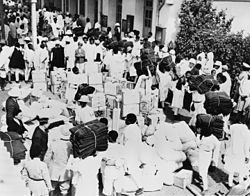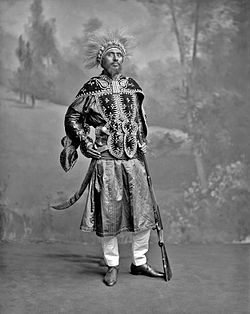Cotton production in Ethiopia
[1] Because most of the lowlands lack adequate rainfall, cotton cultivation depends largely on irrigation.
Before the revolution, large-scale commercial cotton plantations were developed in the Awash Valley[citation needed] and the Humera areas.
In 1867 it was reported that there were plans to construct a 362-kilometre (225-mile) road from the Ethiopian cotton fields to the Red Sea to trade with Egypt and Turkey.
[2] Since the revolution, most commercial cotton has been grown on irrigated state farms, mostly in the Awash Valley area.
[3] There are however, significant obstacles to the development of the industry in Ethiopia due to a distinct lack of administrative bodies to monitor and certify agricultural practices in the country and to process cotton in factories on a wide-scale commercial level.

